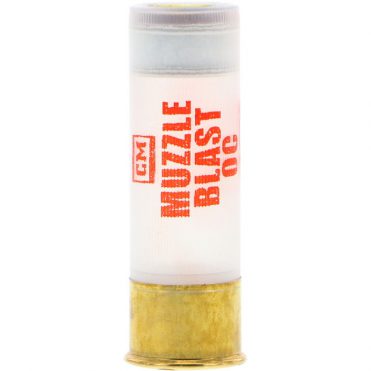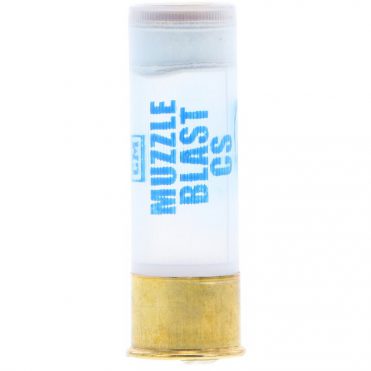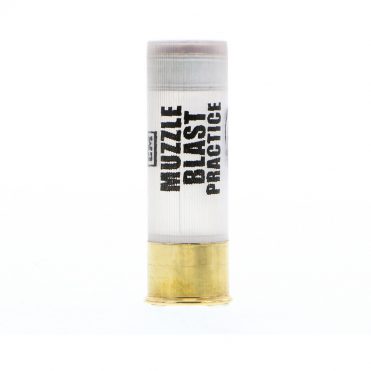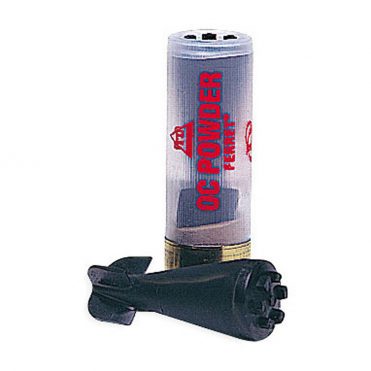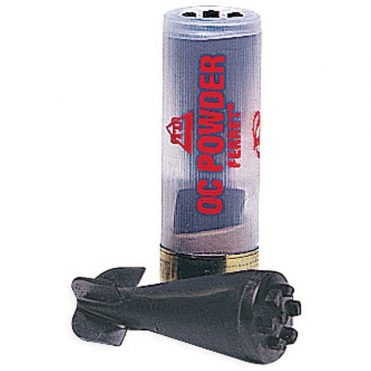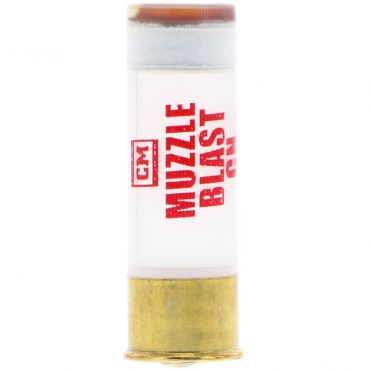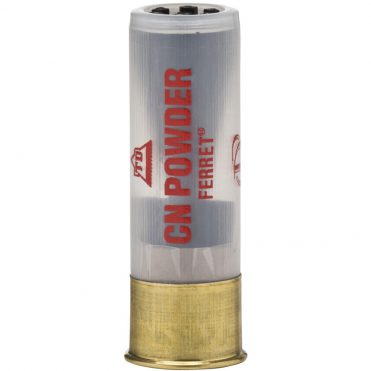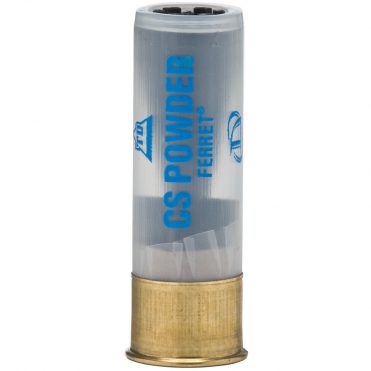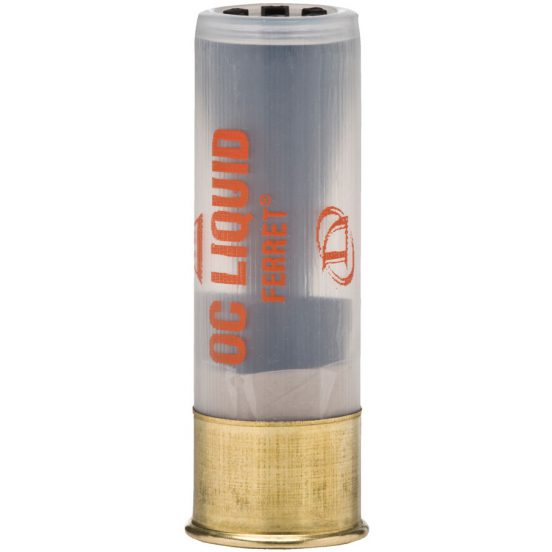
Ferret® 12-Gauge Liquid Barricade Round, OC
The Ferret® 12-Gauge Liquid OC non pyrotechnical properties also eliminate the fire hazard common with other products. The Ferret round is available with either liquid or powder carriers for the agent. These munitions are a 2.5 in. 12-Gauge round deploying .015 oz. of active agent.
FIRST AID FOR OC
I. GENERAL:
Remove affected person from the contaminated area to an open space, facing the wind.
Keep subject calm and restrict activity.
Most subjects will be well on their way to total recovery 45 minutes after first aid begins.
II. EYES: Intense burning sensation, temporary inflammation of the tissues around the eyes, causing involuntary closure.
Wash eyes out with large amounts of cool water.
DO NOT allow the subject to rub their eyes or face. If the need arises to use a paper towel, use a blotting motion and discard after one use.
Find out if subject is wearing contact lenses. If so, allow them to remove the lenses or call EMS to remove them. DO NOT attempt to remove unless medically trained to do so. Contacts may become contaminated and may need to be discarded.
Keep eyes open facing wind.
Tearing helps clear the eyes.
Keep exposed subjects out of direct sun light during the decontamination process. The brighter and hotter the direct sunlight is, the more it enhances the burning sensation.
III. NOSE: Irritation, burning sensation, nasal discharge.
Breathe normally.
Blow nose to discharge any material.
IV. SKIN: Burning sensation on affected skin areas. Redness may occur on fair skinned individuals.
DO NOT apply creams, salves, oils, lotions or burn cream as they will only trap the OC on the skin.
Flush the skin with large amounts of cool water and expose the subject to fresh air.
Further relief may be gained by showering with cool water using mild soap and shampooing hair. Wash thoroughly, rinsing often to manage any contaminated water on your body.
Contact Defense Technology® with any questions regarding these procedures
AREA DECONTAMINATION FOR OC
STEP 1: Ventilate the building to remove airborne OC. Open all doors and windows that weather permits. This should be accomplished as soon as possible. If fans can be placed to increase ventilation, this will help.
STEP 2: Surfaces can be decontaminated by washing with water or a damp cloth. Wet clean where possible, using commercially available detergents like Dawn or Simple Green.
STEP 3: Clothing and other fabrics can be cleaned in their usual manner (either by machine washing or dry cleaning).
NOTE: Rubber gloves and a gauze face mask should be used by personnel during the clean-up stage to prevent the possibility of residual contamination. OC is a better indoor deployment option than CN or CS, as positive clean up and re-occupation of the structure can usually take place within one to two hours. Minimal clean-up costs need be imposed on the deploying agency.
STORAGE OF CHEMICAL MUNITIONS
Poor storage conditions will significantly reduce the shelf life of these chemical products resulting in the replacement of the munitions sooner than necessary or the possible use of defective products. Humidity and heat are the two most damaging factors that destroy chemical munitions.
The projectiles and grenades should be stored in a controlled atmosphere with temperatures between 60 degrees Fahrenheit to 75 degrees Fahrenheit with less than 60% relative humidity.
Munitions should remain sealed in their shipping containers until they are to be used or placed in a call out box.
Never store the grenades and projectiles in the trunk of a car for prolonged periods. The heat may cause the munitions to deteriorate. Exposure to high temperatures can cause the agent to melt, plugging the ports. The unit then has the potential for becoming a fragmentation grenade.
The worst situation for munitions is changes from extreme cold to hot or vice versa.
Storage for 24 hours or more is not recommended for temperatures below –20 degrees Fahrenheit especially in high moisture situations. The munitions may still perform but perhaps at a diminished level.
Black Powder rounds are more sensitive to cold than smokeless rounds.
Pyrotechnic grenades are the least sensitive to colder temperatures because of their chemical makeup.
Stored munitions should be inspected for physical integrity and a representative sample functioned twice a year. Munitions that have surpassed the warranty of 5 YEARS should be replaced.
DISPOSAL OF CHEMICAL AGENTS
The following information is intended only to provide general information for our customers. It is extremely important that anyone using our chemical products comply with all applicable environmental laws and regulations. We recommend that you consult with appropriate legal counsel or governmental authorities prior to disposing of any of our chemical products.
In 1976, Congress enacted a law entitled, The Resource Conservations and Recovery Act of 1976 (RCRA). This law was intended to protect human health and the environment from imprudent disposal of “hazardous wastes.”
Outdated or otherwise unusable pyrotechnic items are considered “hazardous waste” under RCRA and are assigned the EPA hazardous waste code of D00 1 due to their ignitable characteristic. Disposal of these items must be done in accordance with all applicable Federal and/or State laws. Many states have hazardous waste management programs that are much more stringent than Federal law. For this reason, you should check with the EPA Regional Office to determine to what extent these laws apply to you.
